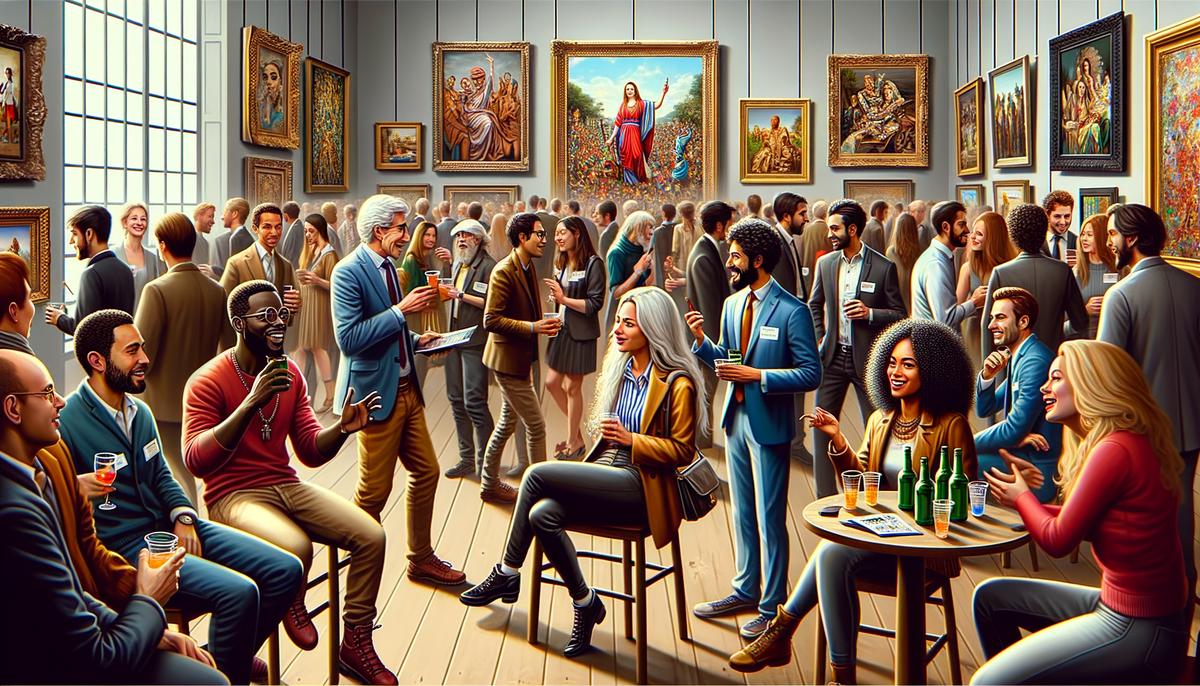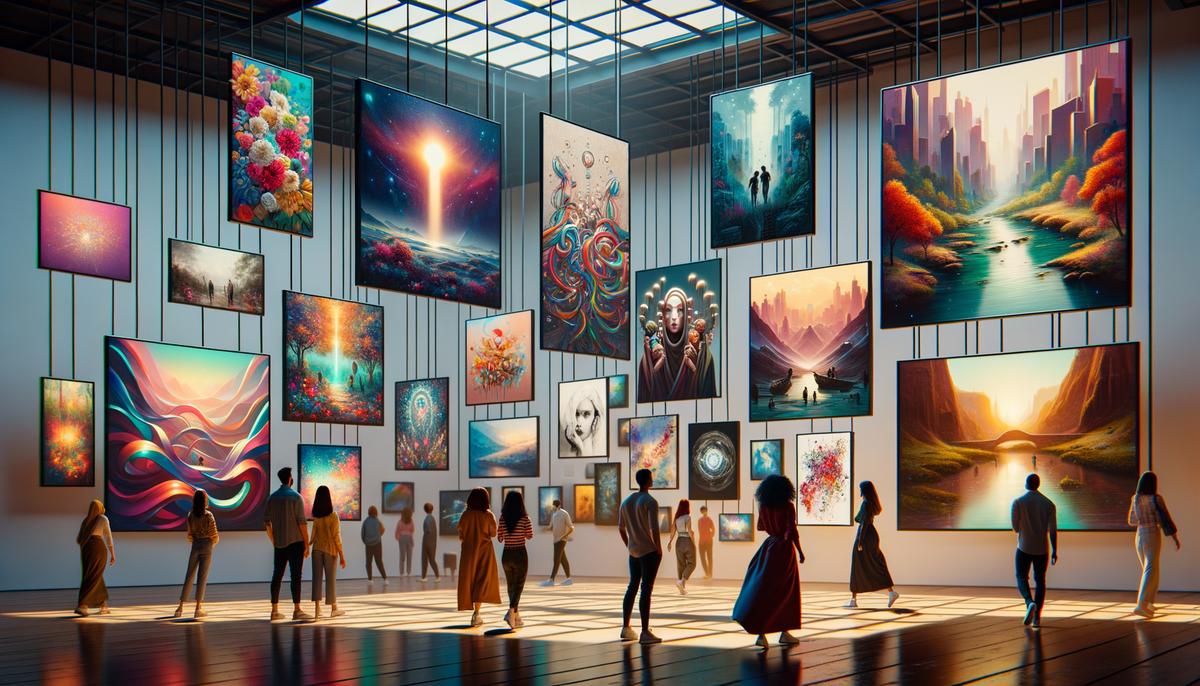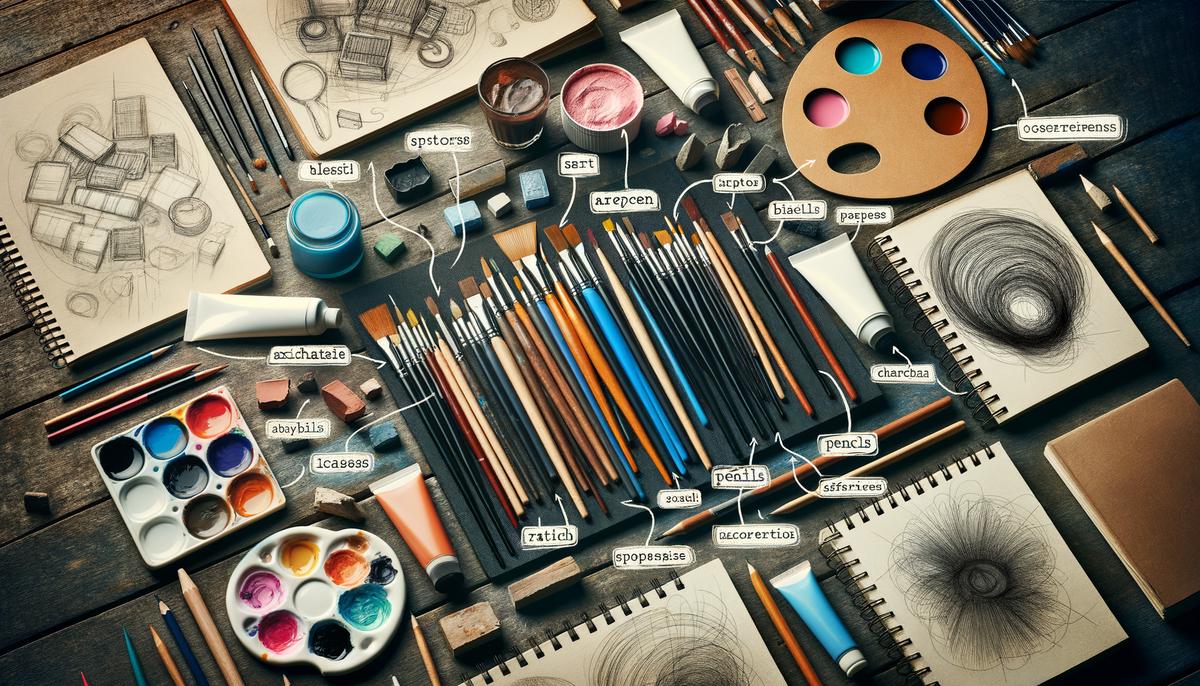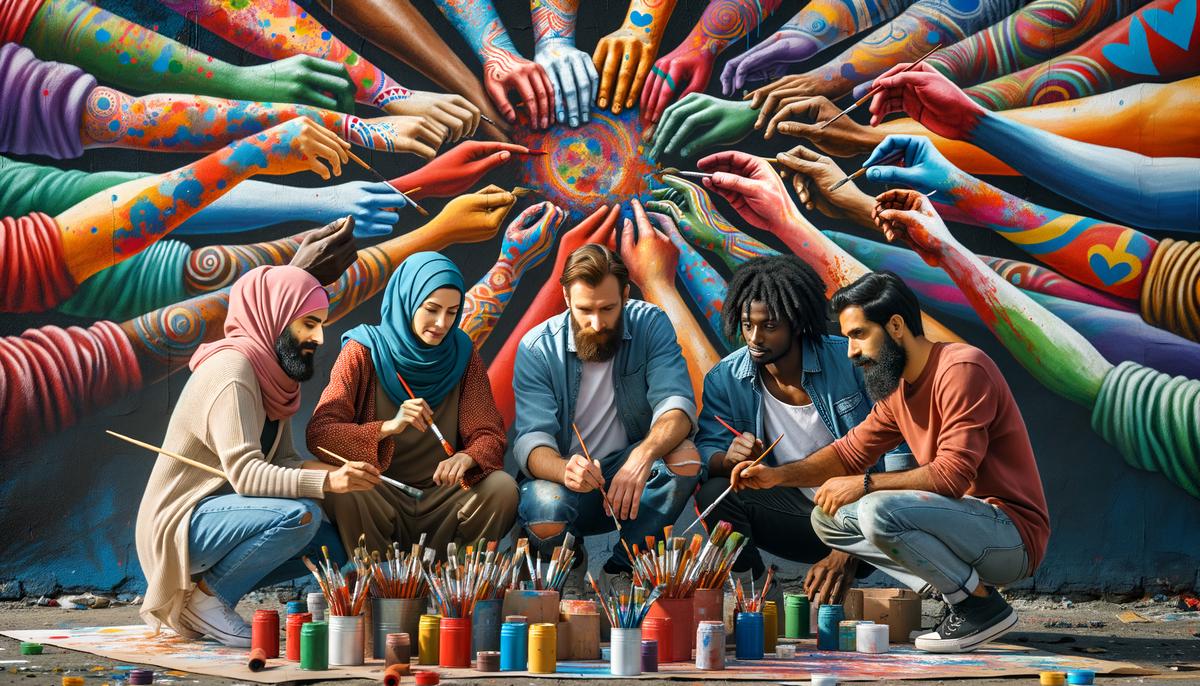The UK art scene offers a rich tapestry for artists and enthusiasts eager to explore and connect. As we embark on this exploration, we’ll uncover the vibrant opportunities for networking, showcasing, and growing within this diverse community. From the historical to the contemporary, and the real to the virtual, understand how the UK stands as a beacon for art lovers worldwide.
Understanding the UK Art Scene
Exploring the Unique Networking Opportunities in the UK Art Scene
The UK art scene is buzzing with creativity and diversity, making it an exceptional place for artists and enthusiasts to dive deep into the art world. What sets the UK apart in the art networking game? It’s all about the unique blend of history, culture, and innovation. Let’s unpack why the UK is a hotspot for art networking and how you can tap into its vibrant community.
Historic Meets Contemporary
The UK has a rich tapestry of art history, from the classic landscapes of Turner to the provocative works of Banksy. This blend of the historic and contemporary creates a dynamic art scene unlike anywhere else. Networking events often reflect this diversity, offering opportunities to engage with art across all genres and eras. Imagine sipping tea while discussing the latest digital art trends, then heading to a gallery in a centuries-old building. Only in the UK, right?
A Melting Pot of Cultures
Thanks to its cosmopolitan cities, the UK art scene draws in talent from around the globe. This cultural melting pot fosters a unique environment for networking, where ideas from different backgrounds collide and create something extraordinary. Whether it’s London’s eclectic galleries or the international art fairs that dot the cities year-round, the opportunities to meet artists, curators, and aficionados from various cultures are endless.
Innovative Art Platforms
The UK is at the forefront of using technology and new platforms to showcase art. From virtual galleries to art-focused social media apps, these innovations make it easier than ever to connect with the art community. You can attend a gallery opening from your living room or participate in an artist talk via webinar. This embrace of technology extends the reach of the UK art scene, allowing for networking opportunities that transcend geographical boundaries.
Festivals and Fairs
Art festivals and fairs are a staple in the UK, each providing a unique atmosphere for networking. Events like the Frieze Art Fair and the Liverpool Biennial attract a who’s who of the art world, from emerging talents to established names. These events are not just about selling art; they’re about sparking conversations, sharing ideas, and forging partnerships. They’re the perfect venues to meet fellow art lovers and get your name out there.
Supportive Art Communities
Perhaps what truly makes the UK art scene unique for networking is the sense of community. From local art collectives to national organizations supporting the arts, there’s a genuine effort to uplift artists and facilitate connections. These communities offer workshops, mentorship programs, and networking events designed to help artists at every stage of their careers. It’s this supportive environment that fosters long-lasting relationships in the UK art scene.
Final Thoughts
The UK art scene’s uniqueness lies in its rich history, cultural diversity, innovative platforms, vibrant festivals, and supportive communities. These elements come together to create unparalleled opportunities for networking. Whether you’re an up-and-coming artist, a seasoned professional, or an art enthusiast, the UK offers a myriad of ways to connect and grow. Embrace the dynamic UK art scene, and you might just find your next big opportunity or inspiration.

Building an Online Presence
Unlocking the Digital Exhibition Space: A Guide for UK Artists
The art world is buzzing, and the UK is at the heart of this creative whirlwind. For UK artists, the scene is ripe with opportunities, especially when it comes to leveraging online platforms for networking. The digital realm opens up new avenues for artists to connect, share, and grow their careers beyond the traditional gallery spaces. But how can you, as an artist in the UK, successfully navigate this digital landscape? Fear not! We’re here to guide you through the ins and outs of using online platforms to your advantage.
Crafting a Stunning Online Portfolio
First things first, your online portfolio is your digital handshake. It’s the first impression you make on potential collaborators, galleries, and collectors. Platforms like Behance, ArtStation, and your personal website can serve as fantastic canvases to display your work. But don’t just throw your art online; curate it carefully. Highlight your best pieces, show a range of skills, and remember, a picture is worth a thousand words, so high-quality images are a must.
Social Media: The Virtual Art GallerySocial media isn’t just for cat videos and memes; it’s your virtual gallery, open 24/7 to a global audience. Platforms such as Instagram, Twitter, and Facebook offer unique ways to showcase your art, share your creative process, and engage with fans and fellow artists. Use hashtags wisely to increase your visibility, join art-related groups, and don’t shy away from collaborations that could showcase your work to a broader audience.
Online Marketplaces: Selling Beyond the GalleryGone are the days when art sales were confined to galleries and auctions. Online marketplaces like Etsy, Saatchi Art, and Artfinder act as digital art fairs, where you can sell your work directly to art lovers worldwide. These platforms are fantastic for gaining exposure and making sales without leaving your studio. Remember, presentation and pricing are key, so make sure your listings stand out and are appropriately priced for your target market.
- Virtual Networking Events: The New Art Social
With the rise of online webinars, workshops, and virtual events, networking has never been easier. Attend virtual art fairs, participate in webinars, and join online workshops not just within the UK but globally. These events are golden opportunities to learn, share, and connect with peers and industry professionals. Don’t be a wallflower; engage, ask questions, and follow up on connections.
Blogging and Vlogging: Share Your Artistic JourneySharing your journey as an artist can be incredibly powerful. Platforms like Medium for blogging or YouTube for vlogging allow you to share your creative process, thoughts on the art world, and more. This not only helps in building your brand but also in establishing a deeper connection with your audience. Authenticity is key, so be true to your style and voice.
Feedback Platforms: Grow and ImproveFeedback is crucial for growth. Websites like Dribbble or concept art forums offer spaces where you can share your work for constructive criticism. Embrace the feedback, engage in discussions, and use these insights to refine your art. Remember, every critique is a step towards becoming a better artist.
Mastering the Art of SEO and AnalyticsFinally, understanding the basics of SEO (Search Engine Optimization) and using analytics can help your website and portfolio rank higher in search results, bringing more eyes to your art. Use relevant keywords in your website’s content, blog posts, and even image descriptions to improve your visibility online.
Navigating the online art world may seem daunting at first, but with the right approach, UK artists can find incredible opportunities to network, showcase their work, and build successful careers. Embrace the digital, but remember, your unique artistic voice and authentic connections are what truly resonate in both the virtual and real world. Go forth and create!

Offline Networking Strategies
Let’s dive deeper into effective offline networking strategies for UK artists. While the digital world offers a plethora of opportunities, the tactile, face-to-face interactions of offline networking hold a charm and effectiveness that are unparalleled. Remember, the art world thrives on personal connections and shared experiences. So, pull up your creative socks, because we’re about to explore how you can enhance your offline networking game in the UK’s vibrant art scene.
Host Your Own Art Show or Open Studio
Why wait for an invitation when you can create your own stage? Hosting an art show or an open studio event is a fabulous way to attract an audience, from potential buyers to fellow artists and gallery owners. It’s your chance to showcase your work in an intimate setting, tell your story, and foster direct connections. Light refreshments, a little background music, and voila! You’ve got an event that people will remember. Plus, it’s a golden opportunity for live feedback.
Attend Workshops and Art Classes
Not only do workshops and art classes hone your skills, but they also put you in a room full of peers and mentors. This environment is ripe for exchanging ideas, techniques, and contacts. Being seen and involved in the community can open doors you didn’t even know existed. The key here is to be a sponge – absorb knowledge, share your perspective, and keep your networking radar on.
Join Art Collectives and Societies
The UK is home to numerous art collectives and societies, grouped by interests, mediums, and even philosophies. Becoming a member of one or several of these groups provides a plethora of networking opportunities, including exhibitions, collaborative projects, and social events. These collectives often have a strong sense of camaraderie and can be a treasure chest of resources and support.
- Volunteer at Art Events and Galleries
Want a backstage pass to the art world? Volunteer! Be it at art festivals, gallery openings, or charity art auctions, volunteering can place you right in the mix. Not only do you get to peek behind the curtain, but you also meet a wide array of professionals in a less formal setting. This strategy is about playing the long game, showing your face, and being remembered as a contributing member of the community.
Personalized Art Postcards and Business Cards
In an era where digital media dominates, the tangibility of a beautifully designed art postcard or a business card can make a strong impression. Have some created that reflect your art style and include all essential contact details. Hand these out at every opportunity. It’s a small but powerful tool that can bridge the gap from a casual encounter to a lasting professional relationship.
Engage Local Businesses
Why not exhibit your work where people least expect it? Many local businesses, from cafes to boutique hotels, are open to displaying art. It adds character to their space and offers you visibility. Additionally, it positions your art in everyday life, making it accessible and sparking conversations. Plus, you never know who might walk through those doors.
- Mentorship and Apprenticeships
Seeking out a mentor or offering yourself as an apprentice can lead to a deeply enriching relationship. It’s a give-and-take that goes beyond mere networking; it’s about building a legacy and learning from the ground up. The guidance, insight, and connections gained through these experiences are immensely valuable.
By integrating these offline strategies, UK artists can forge meaningful connections, maximise exposure, and navigate the art world with confidence. Remember, in the realm of art, personal interaction and shared experiences are invaluable. So, step out, shake hands, and let your art do the talking. And who knows? Your next offline encounter could be the catalyst for your next big break in the dynamic UK art scene.

Collaboration and Community Building
In the UK’s vibrant art scene, collaboration is not just a buzzword; it’s a powerful tool for artists seeking to broaden their networks and enhance their careers. By working together, artists can unlock a multitude of benefits that go beyond the canvas. Let’s dive into how collaborations serve as a cornerstone for networking among artists in the United Kingdom.
Cross-Pollination of Ideas and Techniques
When artists from different backgrounds or specialties join forces, the fusion of creativity is phenomenal. Imagine a traditional painter collaborating with a digital artist, or a sculptor teaming up with a street artist. These partnerships lead to the exchange of unique techniques and perspectives, enriching the creative process. This cross-pollination not only results in innovative artwork but also widens the artists’ appeal to a broader audience. As creators showcase these collaborative pieces, they draw attention from diverse groups, expanding their network organically.
Expanded Visibility Through Combined Audiences
In today’s digital age, an artist’s audience plays a pivotal role in their success. Collaborations effectively double this audience by tapping into the followers, fans, and patrons of each artist involved. For instance, when artists collaborate on a project and share it on social media platforms, their work is exposed to both of their follower bases. This amplifies their reach, leading to increased visibility, more engagement, and the potential for viral content. By pooling their audiences, artists not only gain new followers but also create a buzz that can attract media attention and opportunities for further networking.
Shared Resources and Opportunities
The art world can be fiercely competitive, with resources and opportunities sometimes hard to come by. Collaborating artists often share these valuable assets, from studio space and materials to contacts and exhibition opportunities. This communal approach not only reduces individual costs but also opens doors that might have been closed to solo artists. Joint projects can lead to invitations to group shows, art residencies, or collaborative commissions, which further solidify an artist’s network within the art community and beyond.
Enhanced Learning and Growth
Every artist brings a unique set of skills, experiences, and knowledge to the table. Through collaboration, artists engage in a mutual learning process, picking up new techniques, approaches, and business insights. This shared growth experience is invaluable, as it not only improves their artistry but also equips them with the skills to navigate the art world more effectively. Collaborative projects often require artists to step out of their comfort zones, challenging them to think and create in ways they might not have considered before. This growth mindset encourages continuous improvement and innovation, making artists more appealing to galleries, collectors, and collaborators.
Strengthening Community Ties
Lastly, collaborations emphasize the importance of community in the art world. By working together, artists forge stronger connections with each other, creating a supportive network that can provide feedback, encouragement, and camaraderie. These relationships often extend beyond individual projects, leading to a tight-knit community where members advocate for one another’s success. Such a network is invaluable for finding new opportunities, gaining exposure, and building a sustainable career in the arts.
In conclusion, collaborations are a powerful catalyst for networking among artists in the UK. They foster a creative and supportive environment where artists can thrive, explore new avenues, and reach wider audiences. By embracing the spirit of collaboration, artists not only enhance their own careers but also contribute to a dynamic and interconnected art community. Whether through blending different art forms, sharing resources, or participating in collective learning, the benefits of collaboration are boundless, proving that sometimes, the whole is indeed greater than the sum of its parts.

This exploration of the UK art scene underlines its unique position in fostering artistic talents and connections. Through festivals, online platforms, and community initiatives, artists and enthusiasts find a fertile ground to flourish. Embracing both the traditional and the digital, the UK art landscape promises endless possibilities for creativity, collaboration, and growth. As we reflect on these opportunities, it’s clear that the UK art scene is not just about discovering art—it’s about discovering oneself and others in the process.
























